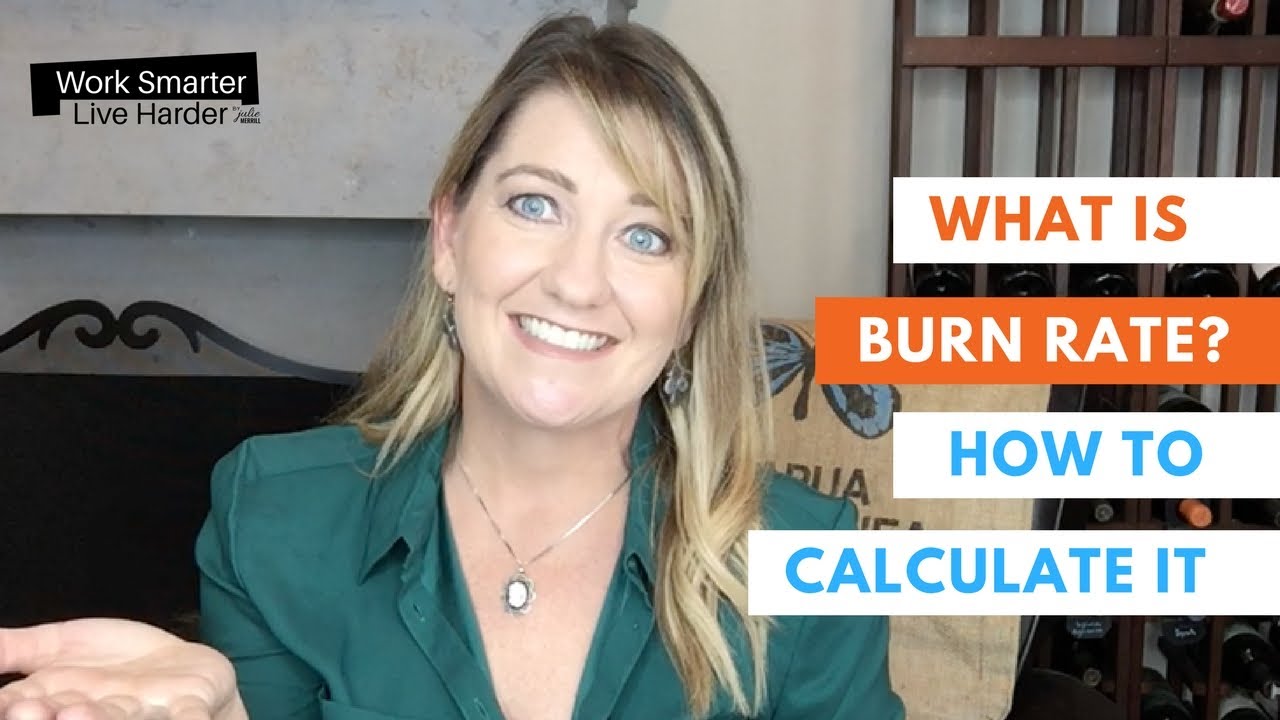It's possible that you already know what a "burn rate" is because you've heard the expression.
Overspending means that your organization is losing moneyrather than bringing in any new revenue.The amount of moneyyour organization spends each month is known as its "burn rate" (revenue-expenses).
Learn how tocalculate burn rates, benchmarks, and more in the following sections.

What is Burn Rate and how to calculate it? - StartUp Terms
Burn Rate Definition
With the burn rate in mind, it is possible to determine how long a businesscan continue to operate until it runs out of money.
For a startup to continue, it must either become profitable or acquire equity financing from outside investors before the startup's cash reserves run out.
The burn rate is an indicator of how long a start-up has until its operations are no longer sustainable and additional capital is required.
If you want to know how long it will take your company to become cash flow positive or seek further stock or debt funding, you should keep track of your company's burn rate.
Early-stage start-ups, in particular, pay special attention to the burn rate measure because they are almost certainly operating at a loss.
Because it may take several years for a start-up to break even, the burn rate can tell you how much money you'll need and when you'll need it.
Due to the fact that nearly all early-stage companies fail once they've spent all of their financing, the burn rate and financial runway are extremely important to venture capitalists (and existing and new investors are not willing to contribute more).
For this reason, no reputable financial institution wants its name associated with an investment that failed because it was made in a high-risk start-up that quickly depleted its investment capital and was forced to shut down.
In order to better comprehend the startup's financial demands, it's helpful to know how much money it will need and how much cash it now has on hand (s).
Non-cash additions should not be counted in the metric's calculation, which is a crucial distinction.
GAAP reporting and the burn rate are closely linked, but the burn rate is a measure of real cash flow.The start-genuine up's liquidity demands are taken into account in the ensuing estimate of the startup's runway.
When all of data is put together, the startup gains the following insights by measuring its monthly capital burn:
- Planning for the next round of funds is essential for Spending.
- In order to break even and start making a profit, the company must bring in enough income to cover the costs of funding operations.
- The amount of time before additional financing is required to maintain the existing level of spending.
- Another consideration is how long a startup must devote to product development and testing.
- Comparison of expenditures and output as a result of this comparison.
How To Calculate Burn Rate
Fermat's Last Theorem may be a little easier to solve than burn rate calculation, but a thorough understanding of both the fundamental burn formula and its modification is essential for economic success.
Gross Burn Rate Calculation
It is necessary to know two numbers in order to calculate your gross burn rate: monthly operating expenses and starting capital, which is the total amount of money you have.
A business' monthly operational expenses encompass everything from rent and utilities to wages and everything else.When you first start your firm, you need to have a certain amount of cash on hand. This might be money you have saved, borrowed, or come from outside investors.Alternatively, you can calculate your burn rate over a given time period using the entire amount of money you have on hand.
To give you an idea, assume your Western wear store has a monthly running cost of $3,500 and you have a $50,000 loan to help you get started.
3.5% of $50,000 is equal to 0.7%
7 percent is what we get when we multiply by 100.This means that your monthly burn rate is 7%.You spent 7% of your initial investment per month as a business owner.
Net Burn Rate Calculation
In order to determine your net burn rate, you'll need to know three things: your monthly revenue, your monthly operating costs, and your starting capital.
When calculating net profit, you divide your operational income (sales minus operating expenses) by the amount of capital that was initially invested.Alternatively, if you want to calculate your burn rate over a specified period of time, you can utilize your total cash on hand at any given time.
Your operating income can be found on an income statement or a cash flow statement, if you have accurate financial records.
Imagine that your Western clothing shop has begun to generate profits.In order to keep the firm running and make $2000 a month, you still have to spend $3,500 per month.
To figure out your net burn rate, follow these steps:
A percentage of $50,000 divided by $2,000 to $3,500
You still don't have a positive cash flow because you continue to spend more than you generate, thus your operational income is negative in this scenario.
1.50% of $50,000 is equal to 0.03%
You get a net burn rate of 3% if you multiply the figure by 100.
The Bottom Line
The dotcom bubble in the late 1990s showed that underperforming companies may raise money to pay for cash burn by issuing new stock shares, and shareholders were glad to do so.
However, as the initial excitement wears off, companies must show that they are profitable, or else they risk being thrown to the whims of the credit markets.
As a result, a company with a high burn rate may be forced to accept unfavorable financing terms, merge, or even go bankrupt due to a lack of funds.Before making an investment, investors should keep an eye on a company's cash flow, capital expenditures, and the rate at which cash is being burned.

